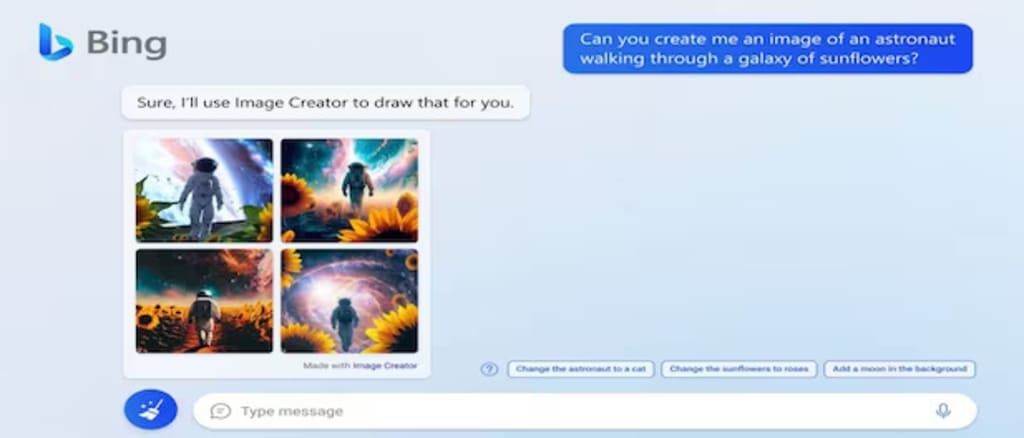
Overview:
In a world where artificial intelligence is advancing at an unprecedented pace, the latest breakthrough in deep learning is DALL-E 2. Developed by OpenAI, this model represents a major leap forward in the ability of machines to create images that look like they were made by humans. With its advanced capabilities for combining concepts, attributes, and styles, DALL-E 2 is poised to revolutionize the field of image generation.
At the heart of DALL-E 2 is a version of GPT-3, the groundbreaking language model that has already made waves in the field of natural language processing. However, instead of generating text, DALL-E 2 uses GPT-3 to generate images. Specifically, it takes in a natural language description of an image, or "prompt," and uses this as the basis for creating a digital image.
One of the key innovations of DALL-E 2 is that it can generate images from prompts that are much more complex than anything its predecessor, DALL-E, was capable of. This is thanks to the fact that DALL-E 2 has learned to recognize the relationships between different elements of an image, and can combine them in novel ways to create something entirely new.
For example, if you were to give DALL-E 2 a prompt like "a fluffy cat riding a unicorn in outer space," it would be able to generate an image that combines all of these elements in a way that looks like a real picture. This is because the model has learned to recognize the attributes of different objects and how they might be combined to create a new concept.
However, DALL-E 2 is not just capable of generating images that are true to their prompts - it can also generate entirely original images that have never been seen before. This is because the model is able to combine different elements of prompts in unexpected ways, creating something that is entirely new and unique.
One of the most impressive things about DALL-E 2 is the level of detail it can incorporate into its images. Unlike other image generation models that might produce something that is recognizable
Chapter Wise Explanation:
Chapter 1: Introduction to DALL-E
DALL-E is an artificial intelligence program that has been developed by OpenAI. It is designed to generate images based on textual descriptions. DALL-E is a successor to GPT-3, another AI program developed by OpenAI. It was introduced in January 2021 and has gained significant attention in the AI community.
Chapter 2: Capabilities of DALL-E
DALL-E is capable of creating a wide range of images, including animals, objects, and scenes, based on textual prompts. It uses a neural network that has been trained on a large dataset of images and text to generate its output. The program is capable of creating highly detailed and realistic images, which has led to its widespread use in a variety of applications.
Chapter 3: The Name DALL-E
The name DALL-E is a combination of two distinct names, the artist Salvador Dali, and the character WALL-E from the Pixar movie of the same name. The name is reflective of the program's ability to create surreal and imaginative images.
Chapter 4: How DALL-E Works
DALL-E works by using a neural network that has been trained on a large dataset of images and text. The program processes the textual prompt and uses it to generate an image that is then outputted. The neural network uses a range of techniques to generate highly detailed and realistic images, including texture synthesis and object manipulation.
Chapter 5: Applications of DALL-E
DALL-E has been used in a variety of applications, including art, design, and advertising. It has been praised for its ability to create highly realistic images that can be used in a range of contexts. Some notable examples of its use include generating images for social media, creating artwork for galleries, and generating images for print advertising campaigns.
Chapter 6: Conclusion
In conclusion, DALL-E is an impressive artificial intelligence program that has the ability to generate highly detailed and realistic images based on textual prompts. Its widespread use in various applications has demonstrated its versatility and its potential to revolutionize the way we create and design visual content.





Comments
There are no comments for this story
Be the first to respond and start the conversation.